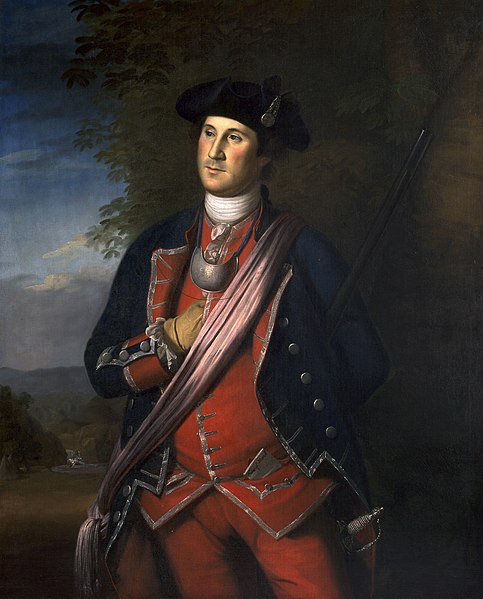A gorget, from the French gorge meaning throat, was a band of linen wrapped around a woman's neck and head in the medieval period or the lower part of a simple chaperon hood. The term later described a steel or leather collar to protect the throat, a set of pieces of plate armour, or a single piece of plate armour hanging from the neck and covering the throat and chest. Later, particularly from the 18th century, the gorget became primarily ornamental, serving as a symbolic accessory on military uniforms, a use which has survived in some armies.
The gorget in this 1772 portrait of Colonel George Washington by Charles Willson Peale, was worn in the French and Indian War to show his rank as an officer in the Virginia Regiment.
Elaborately decorated gilt-brass gorget of c. 1630, probably Dutch
The Gleninsheen gold gorget, Irish Bronze Age, National Museum of Ireland
German military police gorget from World War II
In clothing, a collar is the part of a shirt, dress, coat or blouse that fastens around or frames the neck. Among clothing construction professionals, a collar is differentiated from other necklines such as revers and lapels, by being made from a separate piece of fabric, rather than a folded or cut part of the same piece of fabric used for the main body of the garment.
William Shakespeare in a sheer linen collar of the early 17th century, a direct ancestor of the modern shirt collar.
Image: Japanese market pointerbrand wool band collar jacket (9598148489) (cropped)
Image: Actor John Barrymore (SAYRE 2535)
Image: Portrait of Hannah Fry (by Andrew Geddes)








